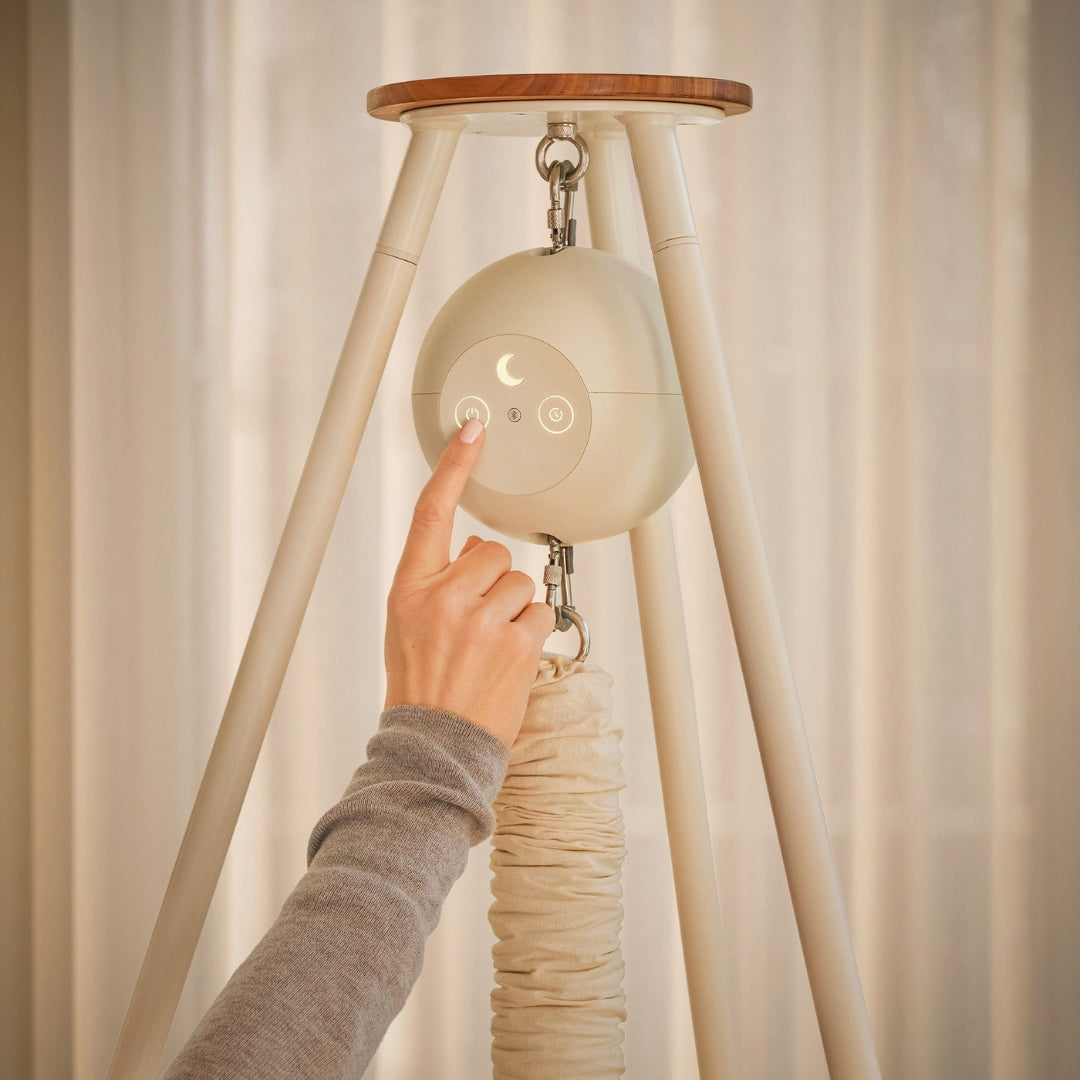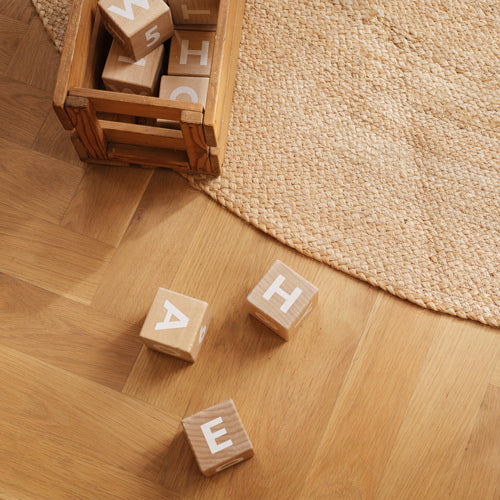


The more active and fit you are during pregnancy, the easier it can be to adjust to your growing belly, shifting posture, and overall physical changes. Keeping your body strong not only supports your everyday comfort, but it can also help you feel more confident and prepared for labor and recovery.
One part of your body that often gets overlooked is the pelvic floor. These muscles don’t get much attention, but they do a huge amount of work during pregnancy and birth. When they’re strong and flexible, they support your baby, your bladder, your uterus, and your bowels. When they’re not, you might notice little leaks when you cough or sneeze, or feel pressure down low.
That’s why it’s a good idea to start paying attention to your pelvic floor early on in pregnancy. In this article, we’ll break down what the pelvic floor is, why it matters, and how you can start strengthening it with some simple tips that really work.
What is the pelvic floor?
The pelvic floor is a group of layered muscles and connective tissue that stretch sort of like a hammock from the front of your pelvis/your pubic bone to the back/your tailbone. These muscles support your bladder, bowel, and uterus, and they help control the release of urine, gas, and stools.
How pregnancy impacts the pelvic floor
As your baby grows, the increasing weight of your uterus combined with pregnancy hormones places extra strain on your pelvic floor. These muscles also go through significant stretching during a vaginal birth to allow your baby to pass through the birth canal.
If you notice small leaks of urine when you laugh, cough, sneeze, or move suddenly, you might be experiencing what is known as stress incontinence. This can be one of the first signs that your pelvic floor muscles need more support.
Many people assume that urine leakage during or after pregnancy is caused by muscles that became weak during pregnancy, but that is not always the case. Often, the muscles were already weak or too tight before pregnancy began. As your body changes to accommodate your growing baby, these underlying imbalances become more noticeable. If your hips or core were not strong before, or if your pelvic floor lacked coordination, pregnancy can bring those issues to the surface.
Doing pelvic floor exercises regularly during pregnancy can help strengthen and support this area. These exercises not only reduce the risk of incontinence, they also help prevent pelvic organ prolapse, which is when organs like the bladder or uterus shift downward into the vaginal canal due to a lack of support.
Why are pelvic floor exercises important?
Pelvic floor exercises, also known as kegels help improve the strength, endurance, and coordination of the muscles that support your bladder, uterus, and bowel. When done consistently during pregnancy, pelvic floor exercises can:
- Reduce or prevent stress incontinence by improving control over bladder function
- Provide better support for your growing uterus and baby as your body changes
- Prepare your body for the physical effort of pushing during labor
- Lower the risk of pelvic organ prolapse, which happens when organs shift downward due to lack of support
- Promote faster and more complete post-birth recovery by helping the body return to balance
When should I start pelvic floor exercises?
Ideally, pelvic floor exercises are something to include in your routine even before pregnancy, but starting during pregnancy is still incredibly beneficial and not “too late”. These muscles play an important role at every stage, so whether you're already expecting or planning to be soon, it's a good idea to begin as soon as you can.
If you're unsure where to begin, check in with your midwife, doctor, or a pelvic floor physiotherapist. They can help assess your current pelvic floor health and guide you toward the most effective and safe exercises for your body and stage of pregnancy.
Finding and feeling the pelvic floor muscles
Before you start any pelvic floor routine, it’s important to understand the sensation and locate the right muscles. You can try this while lying down, sitting, or standing, whatever feels most comfortable to start with. The sensation you’re aiming for is similar to stopping the flow of urine midstream or holding in gas. That gentle lift and squeeze is your pelvic floor at work.
As you engage those muscles, try to also bring your lower abdominal muscles into the movement. Think of lightly pulling your belly button in toward your spine, as if you’re zipping up a tight pair of jeans.
If you're unsure whether you're doing it correctly, you can use a clean finger inserted into the vagina to check. A slight squeeze or tightening around your finger means you're activating the muscles properly.
There should be no pain while doing this. If it feels uncomfortable or you don’t notice much happening, it could mean the muscles are either too tight or not fully engaging. You might need to focus on relaxing and stretching first, or address related areas like your hips or glutes to support better function.
Another helpful idea is to imagine sitting on a small marble and lifting it gently upward using your pelvic muscles. Try holding that lift for about three seconds, then fully release for another three. Practicing this kind of control is a great way to build awareness and strength over time.
Tips for practicing kegel exercises
To get the most benefit from Kegel exercises during pregnancy, here are a few helpful things to keep in mind:
- Avoid doing them while urinating: Trying a Kegel once or twice while peeing can help you understand which muscles you're working, but after that, it's best to practice when your bladder is empty. Repeatedly stopping your urine flow can lead to problems with fully emptying your bladder and may increase the risk of infection.
- Stay relaxed in the right places: Focus on isolating your pelvic floor muscles without clenching your abdomen, thighs, or glutes. Also, remember to breathe naturally, holding your breath make the exercises less effective.
- Listen to your body: A bit of muscle fatigue or light soreness is normal when you’re just starting out, but Kegels should never cause pain. If you feel discomfort or something doesn’t feel right, pause and speak with your healthcare provider.
- Consistency matters: Like any exercise, Kegels work best when done regularly. If you tend to forget, consider using an app that offers reminders and guided routines to help you stay on track. Even just a few minutes each day can make a big difference over time.
When you’re having trouble
If Kegel exercises feel confusing or you’re not sure whether you’re doing them correctly, you’re not alone and there is no reason to feel embarrassed. It can be difficult to isolate the right muscles, especially if you are new to this kind of movement or if your pelvic floor is already tight or weak.
Speaking with your doctor, midwife, or a pelvic floor physiotherapist can make a big difference. These professionals can assess your pelvic floor strength, guide you through the correct technique, and offer tips to help you engage the right muscles without putting strain on other parts of your body. Getting this kind of support early can make your efforts more effective and help you feel more confident throughout pregnancy and recovery.
Different types of Kegel exercise routines
There are several ways to approach Kegel exercises, and mixing up your routine can help target the muscles more effectively.
-
Slow holds: Gently contract your pelvic floor muscles and hold the squeeze for a few seconds before releasing. At first, you might only manage one or two seconds, and that is completely normal. With regular practice, you can build up to holding for 10 seconds at a time. Aim for a set of around 10 repetitions, but start with fewer if that feels more manageable. As you build strength, the hold will feel more controlled and steady.
-
Quick pulses: This involves quickly tightening and releasing the pelvic floor muscles in short bursts. Try doing a set of 10 to 20 quick contractions. This helps train the muscles to respond quickly, which is especially useful for preventing leaks during sudden movements like coughing or sneezing.
-
Rhythmic breathing with holds: Inhale gently to prepare, then exhale slowly as you lift and squeeze your pelvic floor muscles. Hold the contraction for about three seconds, then inhale again as you fully relax. This type of mindful breathing combined with the exercise can help improve coordination and reduce tension in the pelvic area.
-
Endurance sets: As your strength increases, you can gradually increase the number of repetitions and the length of each hold. Try building up to three sets of 10 long holds per day.
-
Functional Kegels: Practice engaging your pelvic floor during everyday tasks like lifting something from the floor, standing up from a chair, or even walking. Learning to activate the muscles during movement can help them respond better during real-life situations, including labor and recovery.
Keep in mind that variety is helpful. A mix of long holds, short pulses, and functional holds will give your pelvic floor the best support during pregnancy and beyond.
When and how often to do Kegels
There is no single rule for how often you should do pelvic floor exercises. Some health professionals suggest practicing them daily, while others recommend a few times per week. The right frequency can vary depending on your body, pregnancy stage, and any existing pelvic floor concerns.
If you are pregnant or have recently given birth, it is a good idea to check in with your doctor, midwife, or a pelvic floor physiotherapist before beginning a routine. They can offer guidance tailored to your needs and let you know if any modifications are necessary.
Once you have the go-ahead, or if you're not currently pregnant, you can easily work Kegels into your everyday routine. Since these exercises are subtle and can be done without anyone noticing, they fit seamlessly into moments like:
- Sitting at your desk or working on your computer
- Relaxing in bed or watching TV
- Waiting at a traffic light
- Standing in line at the grocery store
- Sitting in a waiting room
The most important thing is consistency. A few short sessions throughout the day can make a meaningful difference over time. You can try pairing Kegels with a daily habit, like brushing your teeth or making coffee, so they become part of your regular routine.
When to expect results
If you practice pelvic floor exercises consistently, you may start to notice small improvements within a few weeks. For some, better bladder or bowel control becomes noticeable around the six to twelve-week mark. This can include fewer leaks when coughing or sneezing and a greater sense of control overall.
Everyone’s body responds at its own pace, so try to stay patient and keep at it. Just like any other type of strength training, results come with time and repetition. To maintain and build on your progress, it's best to make pelvic floor exercises part of your long-term routine, even after pregnancy and recovery.
Are kegel weights and tools safe during pregnancy?
Kegel weights, balls, and other pelvic floor tools are designed to help strengthen the vaginal muscles. Many of these devices claim to improve bladder control, enhance muscle, and even increase sexual pleasure. Some are shaped like small cones or balls that are held in place by contracting your pelvic floor muscles. Others, like vaginal exercisers, may use gentle electrical stimulation to activate the muscles for you.
While these tools might be useful in some situations, using them during pregnancy is not always recommended. Inserting foreign objects into the vagina during this time may increase the risk of irritation or infection, especially if your body is more sensitive or your immune response is altered due to pregnancy.
If you're considering using Kegel tools or devices while pregnant, it is important to speak with your doctor or midwife first. They can help you weigh the risks and benefits based on your individual health and stage of pregnancy.
If you and your partner are still enjoying intimacy during pregnancy, you can also explore pelvic floor awareness together. A partner can gently check with clean fingers to see if you are activating the correct muscles when you do your Kegels. Just remember, communication and comfort are key, and there’s no need for any tools if simple, mindful exercises are already working well for you.
Postpartum pelvic floor exercises
After giving birth, your pelvic floor muscles need time and gentle care to heal and regain strength. Pregnancy and delivery, whether vaginal or cesarean, can stretch and weaken these muscles that support your bladder, uterus, and bowel. Consistent and careful pelvic floor exercises after birth can help restore muscle tone, improve bladder control, and support your overall recovery.
It is important to start slowly and pay attention to how your body feels. In the first few days following delivery, focus on gentle engagement and relaxation of your pelvic floor muscles without pushing too hard. As you feel stronger, you can gradually increase the length and intensity of your exercises. These exercises can also lower the risk of pelvic organ prolapse and help you feel more comfortable during daily activities.
Always check with your healthcare provider before starting pelvic floor exercises after childbirth, especially if you had any complications or stitches. They can offer advice on the best time to begin and may suggest working with a pelvic floor specialist if needed.
Adding these exercises into your daily life, such as while feeding your baby, sitting quietly, or resting, can support your body’s healing process and help you regain strength and confidence over time.
A final note
Keeping your pelvic floor and core muscles active during pregnancy can make a real difference in how you feel day to day, how your body adjusts to the changes, and how you recover after birth.
Starting pelvic floor exercises early helps build strength, prevent common discomforts like urine leakage, and prepares your body for labor. Remember, these exercises are simple, can be done almost anywhere, and work best when done consistently.
If you ever feel unsure or need guidance, don’t hesitate to reach out to your healthcare provider. Taking care of your pelvic health is a valuable step toward a smoother pregnancy and postpartum journey.




































